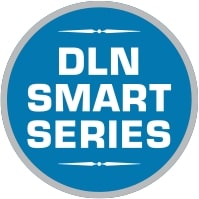Digital Learning Now! Releases Blended Learning Implementation Guide for Schools and Districts

‘Blended Learning Implementation Guide’ Prepares Educational Leaders for a Successful Shift to Blended Learning
Seattle, Wash., February 6, 2013 – In honor of Digital Learning Day, Digital Learning Now! (DLN) today released its fifth white paper in the DLN Smart Series, “Blended Learning Implementation Guide,” which explores blended learning as a phase change with a goal of accelerating learning toward college and career readiness. Like the Alliance for Excellent Education, the authors think schools and districts should develop a plan — and this implementation guide will help leaders to do so.
“Blended learning is the future of education, and by combining the best personalization offered through technology with the best of face-to-face instruction it provides students with an education that meets their individual needs,” said John Bailey, executive director of DLN.
Authors Bailey; Scott Ellis, CEO of The Learning Accelerator; Carri Schneider, director of policy and research at Getting Smart; and Tom Vander Ark, partner at Getting Smart, assert that by the end of the decade, most U.S. schools will fully incorporate instructional technology — extending the learning day, expanding the reach of effective teachers, and increasing personalized learning. The paper begins with this assumption and then moves into a series of decisions to guide implementation.
“Blended learning is not ‘just another district initiative’,’” said Vander Ark. “It is a large scale opportunity to develop schools that are more productive for students and teachers.”
“Many school and district leaders are past the point of needing to be convinced about the merits of blended learning,” said Schneider. “This guide gives those forward-thinking leaders actionable steps toward implementation.”
This is a guide for educational leaders who are ready seize the opportunity and shift to blended learning with changes to faculty roles, classroom structures, staffing patterns, and school budgets through online professional development, dedicated program management, and resolution processes.
“Blended learning is about transforming the learning experience for students through the effective use of technology,” said Ellis. “The guide will help decision-makers understand key choices about strategy, infrastructure, devices, software, professional development, and continuous improvement.”
This is an implementation guide to create conditions for blended learning success. Subtitled Version 1.0, the authors intend to capture and update best practices as schools make the shift. Educational leaders and practitioners in the field are encouraged to submit comments on the draft and engage with the authors through their websites, blogs and social media. Digital Learning Now! and Getting Smart plan to update and re-release this guide, along with the other DLN Smart Series papers in an ebook over the summer.
Download the full paper and learn more at digitallearningnow.com/dln-smart-series. Join the conversation on Twitter with the hashtags #SmartSeries and #DigLN. DLN is also active on Facebook at facebook.com/DigitalLearningNow and Twitter at @DigLearningNow.

0 Comments
Leave a Comment
Your email address will not be published. All fields are required.